Do you have a question about the Samsung S19D300HY and is the answer not in the manual?
Legal notice regarding manual usage and ownership.
Explanation of symbols used to convey information in the manual.
Instructions for safely cleaning the monitor's panel and exterior.
Guidance on ensuring adequate ventilation space around the product.
Advice on contacting customer service for internal cleaning needs.
Essential safety warnings and symbols indicating potential hazards.
Guidelines and warnings related to safe electrical connections and usage.
Safety considerations during product installation and placement.
Important warnings and instructions for safe product operation.
Recommendations for ergonomic setup to ensure comfortable and healthy usage.
Verifying all necessary components are included before setup.
Identification and description of the monitor's front-facing control buttons.
Identification and description of the monitor's rear-facing connection ports.
Step-by-step guide for assembling the stand, wall-mounting, and removing the stand.
How to adjust the screen's tilt angle for optimal viewing.
Instructions on how to use an anti-theft locking device for security.
Preliminary checks and advice before connecting external devices.
Procedures for connecting the monitor to a PC using various cable types (D-SUB, DVI, HDMI).
Instructions for connecting the monitor to a power source using integrated or detachable adapters.
Guide to installing necessary drivers for optimal performance and resolution.
Steps to configure the monitor to its best resolution for clarity and optimal viewing.
Adjusting the overall brightness level of the display.
Modifying the contrast between light and dark areas of the image.
Enhancing or softening the clarity of image outlines.
Optimizing screen settings specifically for gaming.
Utilizing preset modes for optimal picture quality in different environments.
Adjusting viewing angles for better picture quality from different positions.
Enhancing picture detail and vividness, especially for low-resolution content.
Changing the display's aspect ratio and screen fit options.
Adjusting black levels for improved contrast and image quality via HDMI.
Accelerating panel response rate for smoother video playback.
Adjusting the horizontal and vertical position of the displayed image for analog input.
Adjusting the screen frequency for analog signals to reduce distortion.
Fine-tuning the screen for a vivid picture.
Adjusting the intensity of the red color in the picture.
Adjusting the intensity of the green color in the picture.
Adjusting the intensity of the blue color in the picture.
Setting the overall color temperature and tone of the picture.
Adjusting the mid-range brightness (gamma) of the picture.
Selecting the display language for the on-screen menu.
Adjusting the on-screen display menu's position on the screen.
Setting the duration before the OSD menu automatically disappears.
Adjusting the transparency level of the OSD menu windows.
Restoring all product settings to their factory defaults.
Reducing power consumption by adjusting monitor panel settings.
Configuring the product to automatically turn off after a set period.
Setting the specific duration for the automatic power-off timer.
Selecting the input mode for optimal picture display of PC or AV sources.
Controlling the response rate of buttons when pressed.
Enabling automatic or manual detection of the input source.
Viewing current input source, frequency, and resolution details.
Adjusting brightness and contrast on the initial screen before menu display.
Guide to installing and using the monitor partitioning software.
Steps to uninstall the installed monitor software.
Steps to take before contacting support for product issues.
Common screen problems and their corresponding solutions.
Troubleshooting steps for issues related to connected source devices.
Frequently asked questions and their answers for common user queries.
Technical specifications for the S19D300 series monitors.
Technical specifications for the S20D300/S20D340 series monitors.
Technical specifications for the S22D300 series monitors.
Technical specifications for the S24D300BL/HL/H monitors.
Technical specifications for the S24D340HL/H monitors.
Details on the product's power-saving features and consumption.
Table of supported resolutions, frequencies, and sync polarities.
Contact information for Samsung customer support globally.
Conditions under which service charges may apply for customer-requested assistance.
Guidelines for environmentally responsible disposal of the product.
Definitions of key technical terms used in the manual.
Explanation of screen resolution and its impact on display detail.
Description of the Plug & Play feature for automatic monitor setup.
Legal notice regarding manual usage and ownership.
Explanation of symbols used to convey information in the manual.
Instructions for safely cleaning the monitor's panel and exterior.
Guidance on ensuring adequate ventilation space around the product.
Advice on contacting customer service for internal cleaning needs.
Essential safety warnings and symbols indicating potential hazards.
Guidelines and warnings related to safe electrical connections and usage.
Safety considerations during product installation and placement.
Important warnings and instructions for safe product operation.
Recommendations for ergonomic setup to ensure comfortable and healthy usage.
Verifying all necessary components are included before setup.
Identification and description of the monitor's front-facing control buttons.
Identification and description of the monitor's rear-facing connection ports.
Step-by-step guide for assembling the stand, wall-mounting, and removing the stand.
How to adjust the screen's tilt angle for optimal viewing.
Instructions on how to use an anti-theft locking device for security.
Preliminary checks and advice before connecting external devices.
Procedures for connecting the monitor to a PC using various cable types (D-SUB, DVI, HDMI).
Instructions for connecting the monitor to a power source using integrated or detachable adapters.
Guide to installing necessary drivers for optimal performance and resolution.
Steps to configure the monitor to its best resolution for clarity and optimal viewing.
Adjusting the overall brightness level of the display.
Modifying the contrast between light and dark areas of the image.
Enhancing or softening the clarity of image outlines.
Optimizing screen settings specifically for gaming.
Utilizing preset modes for optimal picture quality in different environments.
Adjusting viewing angles for better picture quality from different positions.
Enhancing picture detail and vividness, especially for low-resolution content.
Changing the display's aspect ratio and screen fit options.
Adjusting black levels for improved contrast and image quality via HDMI.
Accelerating panel response rate for smoother video playback.
Adjusting the horizontal and vertical position of the displayed image for analog input.
Adjusting the screen frequency for analog signals to reduce distortion.
Fine-tuning the screen for a vivid picture.
Adjusting the intensity of the red color in the picture.
Adjusting the intensity of the green color in the picture.
Adjusting the intensity of the blue color in the picture.
Setting the overall color temperature and tone of the picture.
Adjusting the mid-range brightness (gamma) of the picture.
Selecting the display language for the on-screen menu.
Adjusting the on-screen display menu's position on the screen.
Setting the duration before the OSD menu automatically disappears.
Adjusting the transparency level of the OSD menu windows.
Restoring all product settings to their factory defaults.
Reducing power consumption by adjusting monitor panel settings.
Configuring the product to automatically turn off after a set period.
Setting the specific duration for the automatic power-off timer.
Selecting the input mode for optimal picture display of PC or AV sources.
Controlling the response rate of buttons when pressed.
Enabling automatic or manual detection of the input source.
Viewing current input source, frequency, and resolution details.
Adjusting brightness and contrast on the initial screen before menu display.
Guide to installing and using the monitor partitioning software.
Steps to uninstall the installed monitor software.
Steps to take before contacting support for product issues.
Common screen problems and their corresponding solutions.
Troubleshooting steps for issues related to connected source devices.
Frequently asked questions and their answers for common user queries.
Technical specifications for the S19D300 series monitors.
Technical specifications for the S20D300/S20D340 series monitors.
Technical specifications for the S22D300 series monitors.
Technical specifications for the S24D300BL/HL/H monitors.
Technical specifications for the S24D340HL/H monitors.
Details on the product's power-saving features and consumption.
Table of supported resolutions, frequencies, and sync polarities.
Contact information for Samsung customer support globally.
Conditions under which service charges may apply for customer-requested assistance.
Guidelines for environmentally responsible disposal of the product.
Definitions of key technical terms used in the manual.
Explanation of screen resolution and its impact on display detail.
Description of the Plug & Play feature for automatic monitor setup.
| 3D | No |
|---|---|
| HD type | WXGA |
| Panel type | TN |
| Screen shape | Flat |
| Display diagonal | 18.5 \ |
| Display resolution | 1366 x 768 pixels |
| Display technology | LED |
| Native aspect ratio | 16:9 |
| Viewing angle, vertical | 65 ° |
| Contrast ratio (typical) | 600:1 |
| Display number of colors | 16.78 million colors |
| Viewing angle, horizontal | 90 ° |
| Display brightness (typical) | 200 cd/m² |
| Supported graphics resolutions | 1366 x 768 |
| Dynamic contrast ratio marketing name | Mega Contrast |
| On/off switch | Yes |
| Tilt angle range | -1 - 20 ° |
| Panel mounting interface | 75 x 75 mm |
| AC input voltage | 100 - 240 V |
| AC input frequency | 50 - 60 Hz |
| Power consumption (standby) | 0.3 W |
| Power consumption (typical) | 13 W |
| Sustainability certificates | ENERGY STAR |
| Package depth | 330 mm |
| Package width | 504 mm |
| Package height | 126 mm |
| Package weight | 3000 g |
| Cables included | VGA |
| Product color | Black |
| Market positioning | - |
| Depth (with stand) | 177 mm |
|---|---|
| Height (with stand) | 347.5 mm |
| Weight (with stand) | 2000 g |
| Depth (without stand) | 53.1 mm |
| Width (without stand) | 444.9 mm |
| Height (without stand) | 273.1 mm |
| Weight (without stand) | 1750 g |

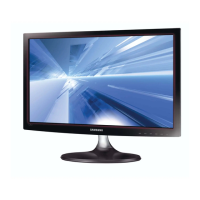
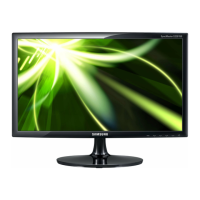

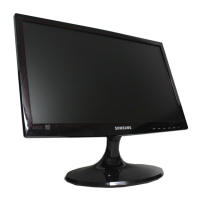
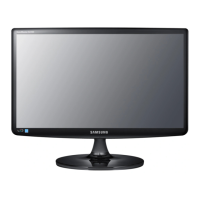
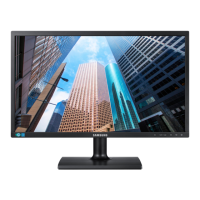
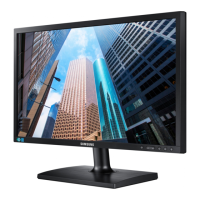
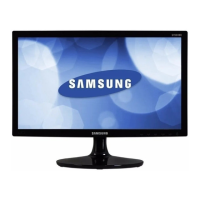
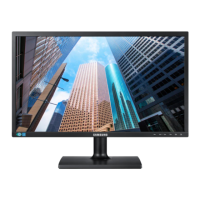
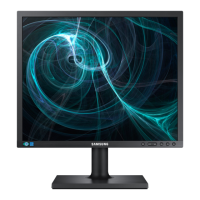
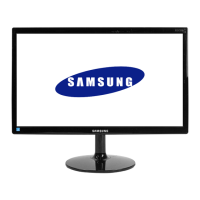
